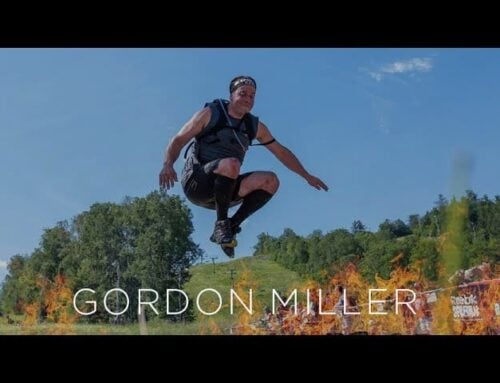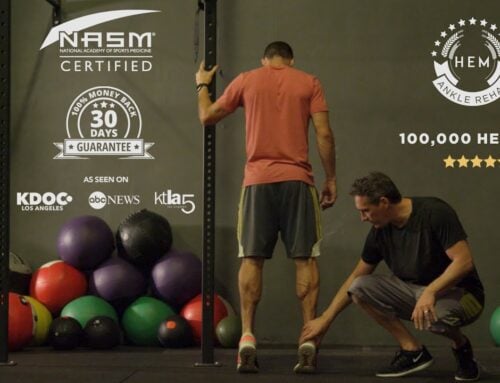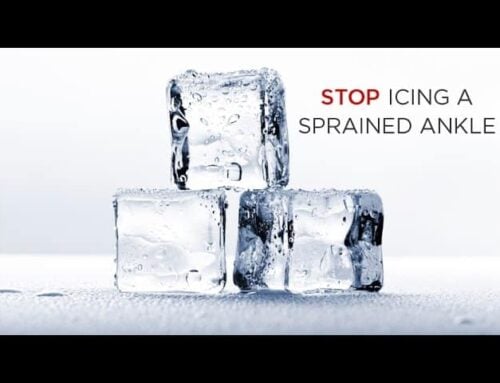
The Achilles tendon is a crucial component of our musculoskeletal system, playing a vital role in mobility and movement. Despite its strength, it’s also prone to injuries that can significantly affect one’s quality of life. Understanding this tendon, its anatomy, and how to care for it can be beneficial in maintaining optimal foot and ankle health.
Introduction to the Achilles Tendon
What is the Achilles Tendon?
The Achilles tendon, often referred to as the strongest tendon in the human body, connects the calf muscle group—comprising the gastrocnemius and soleus muscles—to the heel bone. This tendon at the back of the lower leg is crucial for walking, running, and jumping, transmitting the force generated by the calf muscles to the foot and ankle, enabling efficient movement. However, despite its robustness, the Achilles tendon is susceptible to various injuries, particularly due to overuse or sudden increases in physical activity that can result in inflammation or even a rupture.
Why is it Called the Achilles Tendon?
The name “Achilles tendon” finds its origin in Greek mythology. Achilles was a legendary warrior whose only vulnerability was his heel, where his mother held him as she dipped him into the River Styx to make him invincible. Thus, this tendon was aptly named due to its vital yet vulnerable nature. Despite being the strongest tendon, it can be a significant source of tendon pain and heel pain, especially when subjected to excessive stress or improper care, thus living up to its mythological namesake.
Where is the Achilles Tendon Located?
The Achilles tendon is located at the back of the lower leg, connecting the calf muscles to the heel bone, also known as the calcaneus. It runs down the back of the ankle, playing a pivotal role in foot and ankle movements. This tendon allows the foot to push off the ground during activities like walking and running, making it essential for everyday mobility. Due to its location and function, it’s particularly vulnerable to injuries, especially in athletes or individuals engaged in high-impact sports.
Anatomy of the Achilles Tendon
How is the Achilles Tendon Structured?
The structure of the Achilles tendon is designed for strength and flexibility. It comprises densely packed collagen fibers, which provide the tensile strength necessary to withstand the substantial forces exerted during physical activities. The tendon is surrounded by a sheath that facilitates smooth movement over the ankle joint. Despite its robustness, the Achilles tendon can still suffer from wear and tear, particularly due to overuse or improper stretching, leading to conditions such as achilles tendinopathy or tendonitis.
What are the Surrounding Muscles and Bones?
Surrounding the Achilles tendon are the gastrocnemius and soleus muscles, which form the bulk of the calf muscle and are responsible for plantarflexion of the foot. The tendon itself attaches to the heel bone, or calcaneus, forming a crucial part of the lower leg anatomy. This arrangement allows for the powerful push-off needed in activities like jumping or sprinting. However, this area is also prone to stiffness and inflammation, especially if not properly conditioned or if subjected to sudden, intense physical activity.
What Role Does the Achilles Tendon Play in Movement?
The Achilles tendon plays an indispensable role in movement, acting as the link between the calf muscles and the heel bone, facilitating the transfer of energy required for locomotion. It enables actions such as standing on your toes, walking, running, and jumping by allowing the foot to push off the ground effectively. However, when this tendon is compromised, it can lead to severe mobility issues, as even simple movements can become painful and difficult. This highlights the importance of maintaining tendon health to prevent achilles tendon injuries.
Common Injuries and Conditions
What are the Most Common Achilles Tendon Injuries?
Common Achilles tendon injuries include tendinitis, tendinopathy, and ruptures. Tendonitis involves inflammation of the tendon due to overuse or acute strain, often causing sharp pain and stiffness in the affected area. Achilles tendinopathy, on the other hand, refers to a chronic condition where the tendon degenerates due to repeated stress. Ruptures are the most severe, occurring when the tendon tears completely, often during sudden, forceful movements. These injuries can significantly impact mobility, requiring appropriate diagnosis and treatment for recovery.
How Can You Identify an Achilles Tendon Injury?
Identifying an Achilles tendon injury involves recognizing symptoms such as sharp pain, swelling, and difficulty in moving the foot or ankle. Often, there’s a noticeable stiffness in the morning or after periods of inactivity. In the case of a rupture, individuals may hear a popping sound followed by intense pain and an inability to bear weight on the affected leg. It’s crucial to seek prompt medical attention for an accurate diagnosis and treatment plan to prevent further damage and ensure proper healing.
What is Achilles Tendonitis?
Achilles tendonitis is an inflammation of the Achilles tendon, often caused by repetitive stress or overuse, particularly in athletes or active individuals. This condition leads to pain and tenderness along the tendon, especially near its insertion at the heel bone. Symptoms may include swelling, warmth, and a limited range of motion. If left untreated, it can progress to more severe conditions like insertional achilles tendinopathy, necessitating comprehensive treatment and possibly a lengthy rehabilitation process.
How Does an Achilles Tendon Rupture Occur?
An Achilles tendon rupture occurs when the tendon is subjected to a sudden, forceful stress, causing it to tear completely. This can happen during high-impact sports or activities that involve sudden changes in direction or explosive movements. The rupture is often associated with a popping or snapping sensation, followed by acute pain and difficulty in walking. Such injuries require immediate medical evaluation, as they often necessitate surgical repair to restore function and prevent long-term complications.
Diagnosis and Treatment
How is an Achilles Tendon Injury Diagnosed?
Diagnosing an Achilles tendon injury typically involves a physical examination, where a doctor assesses tenderness, stiffness, and range of motion. Imaging tests such as ultrasound or MRI may be employed to confirm the extent of the injury and to check for any tendon ruptures or tears. Accurate diagnosis is crucial in determining the appropriate treatment plan and ensuring effective recovery, as different types of injuries may require different approaches, from conservative management to surgical intervention.
What are the Treatment Options for Achilles Tendon Injuries?
Treatment options for Achilles tendon injuries vary depending on the severity of the condition. Mild cases of tendonitis or tendinopathy may be managed with rest, ice, compression, and elevation (RICE), along with physical therapy to reduce pain and inflammation. More severe injuries, such as tendon ruptures, may require surgical repair to reattach the tendon properly. Rehabilitation and strengthening exercises are essential in all cases to restore function and prevent future injuries.
When is Surgery Necessary?
Surgery is typically necessary for complete Achilles tendon ruptures or when conservative treatment fails to alleviate symptoms in chronic conditions. The surgical procedure involves reattaching the torn ends of the tendon to restore its integrity and function. Post-surgery, a period of immobilization followed by extensive rehabilitation is required to ensure successful recovery. The decision for surgery takes into account factors such as the patient’s activity level, age, and overall health.
What is the Recovery Process Like?
The recovery process following an Achilles tendon injury or surgery involves several stages, starting with immobilization to allow initial healing. Gradual reintroduction of weight-bearing activities is followed by physical therapy focusing on regaining strength, flexibility, and range of motion. Full recovery can take several months, depending on the injury’s severity and the patient’s adherence to rehabilitation protocols. During this time, it’s essential to monitor for any signs of complications, ensuring a smooth and effective recovery.
Prevention and Maintenance
How Can You Prevent Achilles Tendon Injuries?
Preventing Achilles tendon injuries involves a combination of proper conditioning, stretching, and strengthening exercises. Ensuring adequate warm-up before engaging in physical activities, maintaining flexibility in the calf muscles, and gradually increasing the intensity of workouts can reduce the risk of achilles injuries. Wearing appropriate footwear and avoiding sudden changes in activity levels are also critical in preventing overuse injuries that can lead to tendonitis or ruptures.
How Important is Rehab For The Achilles Tendon?
Rehabilitation is crucial for the Achilles tendon, especially after an injury or surgical repair. Rehab helps restore strength and flexibility, reducing the risk of re-injury and ensuring optimal recovery. A well-structured rehabilitation program includes progressive exercises tailored to the individual’s needs, focusing on pain management, improving range of motion, and enhancing overall function. Commitment to rehab can significantly improve outcomes and prevent long-term complications associated with Achilles tendon disorders.
To learn more about our extremely effective at-home ankle rehab program to help heal the achilles tendon much faster and better, please click here.
Are There Lifestyle Changes That Can Help?
Adopting certain lifestyle changes can significantly benefit those at risk of Achilles tendon injuries. Maintaining a healthy weight to reduce stress on the tendon, incorporating regular low-impact exercises like swimming or cycling, and avoiding activities that cause pain or discomfort are vital strategies. Additionally, being mindful of risk factors such as overuse and wearing supportive footwear can help maintain tendon health. These proactive measures contribute to long-term foot and ankle wellness, minimizing the potential for acute or chronic tendon issues.
Secret of the Pros
Everything You Need To Heal At Home
So, Why Rehab?
Most people think rest and ice will heal their ankle (even a severe sprain), but they end up with chronic ankle instability… 30% still have pain one year later!
And that causes all kinds of muscle imbalances in the body, which can lead more serious injuries, repeated ankle sprains and chronic ankle pain. It’s a terrible domino effect that can last for life.
That’s Where Rehab Comes In.
A great rehab program significantly improves how a sprained ankle heals. It eliminates pain fast and ensures your ankles are strong and stable with healthy range of motion, which helps prevent future sprains.
Rehab Is The Key To
Healing Ankle Injuries Fast
Recent studies have shown that rehab heals ankle ligaments safely and effectively. It’s the difference between the people that don’t heal a sprained ankle and the ones that do!
Injured Ankle
Without Rehab
Injured Ankle
With Rehab
HEM Ankle Rehab “Rehabs” Your Ankle

HEM is a complete ankle rehab and prehab program for the entire ankle, foot and calf complex. This is a very thorough program that contains so much more than anything else you can find online, but it’s still easy to do.
Scott will coach you through every step, as if you are with him, one on one. Just follow along with the videos to rebuild your ankle from the ground up.
You can expect pain free mobility and strong, stable ankles that are protected from an ankle sprain, without ankle braces!
REAL PEOPLE, REAL RESULTS
From Scott Malin, NASM-CPT, CES
Creator, HEM Ankle Rehab
October 24, 2025
Fifteen years ago, I had to give up what I love doing most… playing basketball. I sprained my ankles so many times that I could no longer play. It was devastating.
Like you, I used R.I.C.E. (rest, ice elevation, compression), but my ankles healed so slowly and badly, they eventually got so weak, I would sprain them just walking down the street!
Being a fitness trainer, the only thing I had going for me was a fascination with helping people get out of pain and strengthening their bodies.
So, I decided to research all the cutting edge techniques to heal an ankle sprain much faster and better than R.I.C.E.
After months of research, I discovered that icing an injury can have a negative affect on the body’s healing process. Studies show that ice can actually slow down healing and too much rest left the ankles weak and unstable. This was shocking, but only part of the story…
New research was suggesting a much more proactive approach to healing that involved much better rehab techniques proven to dramatically speed up the speed and quality of the healing process.
Instead of months, healing took only days. And, if you had a chronically weak ankle that was in pain, these techniques would quickly strengthen and stabilize the ankles.
I kept improving on these techniques, drawing from many different disciplines and simplified them.
Eventually, after many more months of trial and error, I created a simple at-home healing system with very reliable results.
Since I was a fitness trainer, I was able to help all my clients (celebrities and athletes) whenever they got injured. I was even on the news a few times.
The response from my clients and friends was so overwhelming that a few of them eventually convinced me to share it with everyone.
Today, I am humbled that over 100,000 people have healed fully and fast with my program.
So, if you have any kind of ankle injury (new or old), just follow along with me in the videos and I’ll show you exactly what to do until you are completely pain free.
My message is simple… you do not have to give up what you love. And you do not have to live with chronic pain from old injuries. Life is too short and there is a better way!
I truly hope you will start using my program so you can get your life back and do what you love, pain free (and yes, I still play basketball every week and LOVE it!)
Thank you!
Scott
Heal Your Ankle FAST ⇣

30 day money back guarantee
15 YEARS. 100K HEALED.

Secret of the Pros
Everything You Need To Heal At Home
REAL PEOPLE,
REAL RESULTS
So, Why Rehab?
Most people think rest and ice will heal their ankle (even a severe sprain), but they end up with chronic ankle instability… 30% still have pain one year later!
And that causes all kinds of muscle imbalances in the body, which can lead more serious injuries, repeated ankle sprains and chronic ankle pain. It’s a terrible domino effect that can last for life.
That’s Where Rehab Comes In.
A great rehab program significantly improves how a sprained ankle heals. It eliminates pain fast and ensures your ankles are strong and stable with healthy range of motion, which helps prevent future sprains.

Rehab Is The Key To
Healing Ankle Injuries Fast
Recent studies have shown that rehab heals ankle ligaments safely and effectively. It’s the difference between the people that don’t heal a sprained ankle and the ones that do!
Injured Ankle
Without Rehab
Injured Ankle
With Rehab
HEM Ankle Rehab
“Rehabs” Your Ankle

HEM is a complete ankle rehab and prehab program for the entire ankle, foot and calf complex. This is a very thorough program that contains so much more than anything else you can find online, but it’s still easy to do.
Scott will coach you through every step, as if you are with him, one on one. Just follow along with the videos to rebuild your ankle from the ground up.
You can expect pain free mobility and strong, stable ankles that are protected from an ankle sprain, without ankle braces!
100,000 PEOPLE HEALED-
-
-
-
-
-
-
-
-
-
-
-
-
-
-
-
-
-
From Scott Malin, NASM-CPT, CES
Creator, HEM Ankle Rehab
October 24, 2025
Fifteen years ago, I had to give up what I love doing most… playing basketball. I sprained my ankles so many times that I could no longer play. It was devastating.
Like you, I used R.I.C.E. (rest, ice elevation, compression), but my ankles healed so slowly and badly, they eventually got so weak, I would sprain them just walking down the street!
Being a fitness trainer, the only thing I had going for me was a fascination with helping people get out of pain and strengthening their bodies.
So, I decided to research all the cutting edge techniques to heal an ankle sprain much faster and better than R.I.C.E.
After months of research, I discovered that icing an injury can have a negative affect on the body’s healing process. Studies show that ice can actually slow down healing and too much rest left the ankles weak and unstable. This was shocking, but only part of the story…
New research was suggesting a much more proactive approach to healing that involved much better rehab techniques proven to dramatically speed up the speed and quality of the healing process.
Instead of months, healing took only days. And, if you had a chronically weak ankle that was in pain, these techniques would quickly strengthen and stabilize the ankles.
I kept improving on these techniques, drawing from many different disciplines and simplified them.
Eventually, after many more months of trial and error, I created a simple at-home healing system with very reliable results.
Since I was a fitness trainer, I was able to help all my clients (celebrities and athletes) whenever they got injured. I was even on the news a few times.
The response from my clients and friends was so overwhelming that a few of them eventually convinced me to share it with everyone.
Today, I am humbled that over 100,000 people have healed fully and fast with my program.
So, if you have any kind of ankle injury (new or old), just follow along with me in the videos and I’ll show you exactly what to do until you are completely pain free.
My message is simple… you do not have to give up what you love. And you do not have to live with chronic pain from old injuries. Life is too short and there is a better way!
I truly hope you will start using my program so you can get your life back and do what you love, pain free (and yes, I still play basketball every week and LOVE it!)
Thank you!
Scott
Hurry, sale ends soon!
30 day money back guarantee



























